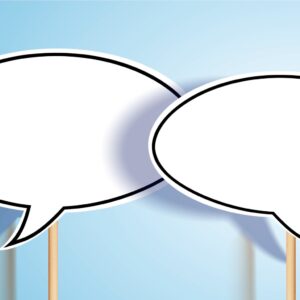Did you know that redwood trees are flame retardant? Neither did this big city gal turned Northern California woods dweller, but sheltering in place for the past year has taught me a lot about my surroundings that I wouldn’t have noticed before. I learned this fun fact when I took the pandemic time to read my home insurance renewal paperwork and discovered our fire coverage is lower because our home has redwood siding. Speaking of fire, pinecones are dependent on fire to release their seeds and clean up underbrush. That got me wondering whether the hospitality industry could turn this year of disruption into fertile ground to improve the workforce. Stay with me here.
Pre-pandemic (also known as the era in which I wore hard pants every day), I partnered with Packard Group to develop the six components of culture to assist organizations in improving their recruitment and retention efforts. That may have been a message lost in the underbrush of existing workplaces. The last 15 months was a harsh reminder that we never had control of certain elements of our lives to begin with. Now that so much has been wiped away, perhaps the disruption clears space for you to do a quick assessment of your organization and team members and intentionally choose a path forward!
Let’s take each component one at a time:
Culture

Whether you define it as “the water fish swim in” or the “air we breathe” culture is how people know what to do even when there isn’t anyone around telling them how to behave. It is our invisible guide. It is always reflective of an underlying value system. If you are a Blake Shelton fan, culture is who you are when no one is looking. The past year has been a year without a lot of people looking.
Collectively, the world jumped with little to no direction. For many, the past year enabled reflection on what was “normal” and offered a chance to develop a “new normal.” It is an opportunity to intentionally build back toward a better framework. Taking your organization, business, homelife or relationships, follow me through the charred forest to new growth.
Beliefs
First and foremost, what are the central beliefs that hold the organization together? Family members, roommates, work spouses and teammates alike have navigated an unspoken belief system that may not be articulated. Now is your chance to create new rules for interacting.
See also: What Meeting Profs Get Wrong About DEI—and How to Start Fixing It
You may have or be a new hire during the disruption period and that newness could be a valuable tool in articulating the beliefs system of the organization. Ideally, everyone in the organization will share a common set of beliefs, or they will find themselves to be a bad “fit” for the organization. If they don’t find themselves to be a bad fit, but their co-workers do, this is a breeding ground for a toxic workplace. Once you identify the fundamental beliefs of an organization, and all players align and agree with these to the core (or at least in exchange for a paycheck), you can keep planting seeds for growth.
Norms
 Distinct from beliefs, are organizational norms, or the expectations—formal or informal—about how to behave. Norms are often unwritten elements of culture that define the “fit.” I often reference Charlie Chaplin when I think about unspoken norms. Several years ago, I was getting my hair done and a guy came in to get Charlie Chaplin make up done for an upcoming Halloween costume. He shared that almost a year ago he had started working as the Chief Financial Officer of one of the biggest employers in my hometown. His first week on the job included Halloween, but no one told him that the office staff dress up and take Halloween very seriously. For a year, he has been plotting his Halloween costume out of humiliation that he showed up in street clothes instead of an elaborate costume. He didn’t know what he didn’t know, but more importantly, the co-workers didn’t either. They didn’t realize how much Halloween has become a norm in the office, and they didn’t think to explain this unspoken expectation to a new hire. The CFO’s attention for a year had been distracted to “make up” for the unknown norm for a year.
Distinct from beliefs, are organizational norms, or the expectations—formal or informal—about how to behave. Norms are often unwritten elements of culture that define the “fit.” I often reference Charlie Chaplin when I think about unspoken norms. Several years ago, I was getting my hair done and a guy came in to get Charlie Chaplin make up done for an upcoming Halloween costume. He shared that almost a year ago he had started working as the Chief Financial Officer of one of the biggest employers in my hometown. His first week on the job included Halloween, but no one told him that the office staff dress up and take Halloween very seriously. For a year, he has been plotting his Halloween costume out of humiliation that he showed up in street clothes instead of an elaborate costume. He didn’t know what he didn’t know, but more importantly, the co-workers didn’t either. They didn’t realize how much Halloween has become a norm in the office, and they didn’t think to explain this unspoken expectation to a new hire. The CFO’s attention for a year had been distracted to “make up” for the unknown norm for a year.
What are your unspoken elements or expectations? Why do they exist? Do they correlate with the shared beliefs you identified earlier?
See also: Work Smart: Easy Inclusion
Artifacts
Use this as an opportunity to review the workplace artifacts, or the physical elements your organization produces that represent your shared values. If you have been working from home in a corner behind the couch and laundry piles, what artifacts have you collected to make your workplace yours, productive and personal? What about the elements you have acquired or repurposed to feel professional? These items may correlate with the undocumented norms and beliefs that make you fit or not fit in with the others in the workforce.
As odd as it may seem, my hair has become an artifact of my personality, brand, business and even serves as an ice breaker when meeting new clients. Yes, there may be some overlap here with other components, but work with me here. I now have “nice” sweatpants and “good” sweatshirts. I have a friend that uses her company’s coffee mug to drink her WhiteClaws from during late afternoon Zoom meetings. This month, my hair is blue, it is always dealer’s choice when I have a hair appointment. My clients, new and returning, look forward to “What color is it going to be?” when I showed up in person, and now in virtual meetings. I use this to break the ice, and while on brand, it is also fundamental to who I am as a person and the work that I do, by inviting others to engage across difference and get comfortable.
What about you? Look around your workspaces and keep what you need to keep, question everything, and utilize the artifacts that make a workspace yours while allowing others to do the same. If there is push back, ask if there is an unspoken norm or belief at play and adjust accordingly.
Language
 One of the first areas that will need adjustment is the actual language used within organizations or workforces. Language structures our thoughts, including the opportunities we perceive and the threats we feel.
One of the first areas that will need adjustment is the actual language used within organizations or workforces. Language structures our thoughts, including the opportunities we perceive and the threats we feel.
I am seeing this pop up as folks are working in hybrid situations. Be mindful that members of your workforce may have asked for flexibility due to family care needs, personal preferences, disability accommodations, on-going education or similar issues prior to the pandemic, and were turned down. You may remember last spring there was a wave of articles that questioned productivity at home or the stratification of micromanagement while working from home. Subordinates were asked to report hourly accomplishments because management didn’t trust people were working on the company dime. Now, I hear people are gaining weight because they aren’t exercising as much as when they were home. This makes me ask how that company wellness program is doing when we realize that we may have been more productive at multiple full-time responsibilities when left up to our own devices. Others may have a completely different experience. This is an excellent time to take note of the language we are using to describe our own workflow and that of others.
Does the language used align with the beliefs, norms, artifacts? Spoiler alert—probably not! Can lessons from home shift the language used in the office?
Customs
If you are shifting language soon, you will (re)discover the sacred cows or customs of your organization. Every organization has traditions, standard operating procedures and best practices that become sedimented in written policies, rules and expectations. They can seem immutable.
Some customs you will want to keep, but take the time to ask yourself why. Just because XXX is part of training, or the promotion process, doesn’t mean it can’t change. If it is fundamental to the organization, then these customs may help you articulate some of the other elements of culture.
When I consult with clients, one of the first places I start is by examining Bylaws and Policy/Procedure Manuals (I know this is why no one invites me to parties). Inevitably, I am the first person to really read these documents since—the average is probably 1982. Other than converting scanned copies into editable PDFs, I also check for federal law compliance, grammar, spelling and shoulder pads. You read that right. Published dress code policies are often very gendered, stratified by organizational style (more on that in just a second) and rest on an outdated definition of “professionalism” that is rooted in assumptions of race, class, education, ability, size and culture. This is my quickest window into the culture of a client I am just getting to know. Perhaps you can use this disruption period to get to know your own organization as a clean slate. Keep what aligns with the other components—plant seeds for something new if it doesn’t.
Does the literal language used internally match what your marketing states? Words matter and should be aspirational at first glance. This is your best recruitment and retention tool regarding your workforce talent.
Organizational Style
 Lastly, but oddly where most leadership’s think is the starting place is your Organizational Style—This not only communicates what your organization cares about, but determines what your people are allowed to do. How do you share your culture outside of your organization? Who is permitted to share? Is what is allowed to be shared tightly controlled for uniformity? If all were in alignment, what else within your organization would you be able to control?
Lastly, but oddly where most leadership’s think is the starting place is your Organizational Style—This not only communicates what your organization cares about, but determines what your people are allowed to do. How do you share your culture outside of your organization? Who is permitted to share? Is what is allowed to be shared tightly controlled for uniformity? If all were in alignment, what else within your organization would you be able to control?
Flash back to our Charlie Chaplin CFO. He described being humiliated at work when it seems that his co-workers were in the wrong (and he is in management)! Is your workforce empowered to solve problems or do they have to get approval first? How does the structure encourage creativity and problem solving?
I once received a letter of reprimand for having lunch with a Director (above my pay grade). I was punished for communicating “up the chain of command” without my supervisor’s approval or presence. It didn’t matter that she and I had worked together in a previous position, where we both utilized each other for support and developed a friendship. Years had passed, and we both got hired in the same month at our respective new jobs. Based on the supervision style, I hadn’t followed the stated policies (customs) which was formally documented (language), in a working environment that espoused cross-collaboration with different offices (beliefs) and regularly used the on-campus coffee shop (artifacts) for casual coffee talks (norms).
It’s been a year. Use it wisely to plant seeds.
Jessica Pettitt has been stirring up DEI Conversations for almost two decades with her concept of Good Enough Now–how doing the best you can with what you have some of the time is better than nothing never. For more information visit JessPettitt.com.




